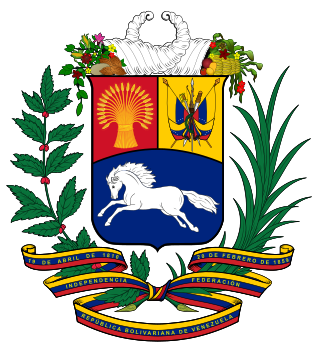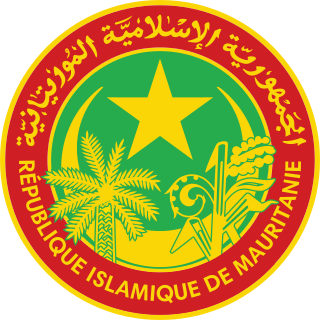
Bhimrao Ramji Ambedkar was an Indian jurist, economist, social reformer and political leader who headed the committee drafting the Constitution of India from the Constituent Assembly debates, served as Law and Justice minister in the first cabinet of Jawaharlal Nehru, and inspired the Dalit Buddhist movement after renouncing Hinduism.
The Uniform Civil Code is a proposal in India to formulate and implement personal laws of citizens which apply on all citizens equally regardless of their religion. Currently, personal laws of various communities are governed by their religious scriptures. Implementation of a uniform civil code across the nation is pursued by India's governing Bharatiya Janata Party. Personal laws cover marriage, divorce, inheritance, adoption and maintenance. While articles 25-28 of the Indian Constitution guarantee religious freedom to Indian citizens and allow religious groups to maintain their own affairs, article 44 expects the Indian state to apply directive principles and common law for all Indian citizens while formulating national policies.

The Constitution of India is the supreme law of India. The document lays down the framework that demarcates fundamental political code, structure, procedures, powers, and duties of government institutions and sets out fundamental rights, directive principles, and the duties of citizens, based on the proposal suggested by M. N. Roy. It is the longest written national constitution in the world.

The Supreme Court of India is the supreme judicial authority and the highest court of the Republic of India. It is the final court of appeal for all civil and criminal cases in India except for Muslim personal law. It also has the power of judicial review. The Supreme Court, which consists of the Chief Justice of India and a maximum of fellow 33 judges, has extensive powers in the form of original, appellate and advisory jurisdictions.

The Constitution of the Bolivarian Republic of Venezuela is the current and twenty-sixth constitution of Venezuela. It was drafted in mid-1999 by a constituent assembly that had been created by popular referendum. Adopted in December 1999, it replaced the 1961 Constitution, the longest-serving in Venezuelan history. It was primarily promoted by then President of Venezuela Hugo Chávez and thereafter received strong backing from diverse sectors, including figures involved in promulgating the 1961 constitution such as Luis Miquilena and Carlos Andrés Pérez. Chávez and his followers (chavistas) refer to the 1999 document as the "Constitución Bolivariana" because they assert that it is ideologically descended from the thinking and political philosophy of Simón Bolívar and Bolivarianism.

The Constituent Assembly of India was elected to frame the Constitution of India. It was elected by the Provincial assemblies of British India following the Provincial Assembly elections held in 1946. After India's independence from the British in August 1947, its members served as the nation's 'Provisional Parliament', as well as the Constituent Assembly. It was conceived and created by V. K. Krishna Menon, who first outlined its necessity in 1933 and enshrined it as an Indian National Congress demand.

The Fundamental Rights, Directive Principles of State Policy and Fundamental Duties are sections of the Constitution of India that prescribe the fundamental obligations of the states to its citizens and the duties and the rights of the citizens to the State. These sections are considered vital elements of the constitution, which was developed between 1949 by the Constituent Assembly of India.
The Fundamental Rights in India enshrined in part III of the Constitution of India guarantee civil liberties such that all Indians can lead their lives in peace and harmony as citizens of India. These rights are known as "fundamental" as they are the most essential for all-round development i.e., material, intellectual, moral and spiritual and protected by fundamental law of the land i.e. constitution. If the rights provided by Constitution especially the Fundamental rights are violated the Supreme Court and the High Courts can issue writs under Articles 32 and 226 of the Constitution, respectively, directing the State Machinery for enforcement of the fundamental rights.
The Directive Principles of State Policy of India are the guidelines to be followed by the government of India for the governance of the country. They are not enforceable by any court, but the principles laid down there are considered "Fundamental" in the governance of the country, which makes it the duty of the State to apply these principles in making laws to establish a just society in the country. The principles have been inspired by the Directive Principles given in the Constitution of Ireland which are related to socialjustice, economic welfare, foreign policy, and legal and administrative matters.
Kazi Syed Karimuddin MA, LLB was a member of the Constituent Assembly of India that framed the Indian Constitution.

The 42nd amendment, officially known as The Constitution Act, 1976, was enacted during the Emergency by the Indian National Congress government headed by Indira Gandhi.

Dewan Bahadur Sir Alladi Krishnaswamy Iyer was an Indian lawyer and member of the Constituent Assembly of India, which was responsible for framing the Constitution of India. He also served as the advocate general of Madras State from 1929 to 1944. Neuroscientist Vilayanur S. Ramachandran is his grandson. Alladi Ramakrishnan, an Indian physicist and the founder of the Institute of Mathematical Sciences was his son.

Beohar Rammanohar Sinha presents the principles of the Constitution and indicates the sources of its authority. The preamble is based on the Objectives Resolution, which was moved in the Constituent Assembly by Jawaharlal Nehru on 13 December 1946 accepted on 22 January 1947 and adopted by the Constituent Assembly on 26 November 1949, coming into force on 26 January 1950, celebrated as the Republic Day of India, and was initially drafted by V. K. Krishna Menon. Menon explicitly did not include the words "socialist" or "secular", after consultation with Nehru; the text was later amended during the Indian emergency by Indira Gandhi where the words "socialist", "secular" and "integrity" were added.

The current Constitution of Mauritania was adopted on 12 July 1991. There have been several constitutions since Mauritania's independence in 1960.

Sir Benegal Narsing Rau was an Indian civil servant, jurist, diplomat and statesman known for his key role in drafting the Constitution of India as the Constitutional Advisor to Constituent Assembly. He was also India's representative to the United Nations Security Council from 1950 to 1952. His brothers were Governor of the Reserve Bank of India Benegal Rama Rau and journalist and politician B. Shiva Rao.
The Hindu code bills were several laws passed in the 1950s that aimed to codify and reform Hindu personal law in India, abolishing religious law in favor of a common law code. The Indian National Congress government led by Prime Minister Jawaharlal Nehru successfully implemented the reforms in 1950s. This process was started during the British rule of India.
Amending the Constitution of India is the process of making changes to the nation's fundamental law or supreme law. The procedure of amendment in the constitution is laid down in Part XX of the Constitution of India. This procedure ensures the sanctity of the Constitution of India and keeps a check on arbitrary power of the Parliament of India.

Dr. B.R. Ambedkar National Law University (DBRANLU) is a National Law University located at Rajiv Gandhi Education City, Sonipat, Haryana, India. It is the 23rd National Law University established in India by the State Government of Haryana in the year 2012 by the State Legislature Act No. 15 of 2012. By an Amendment in 2014, the name of the university was changed from 'The National Law University Haryana' to 'Dr. B.R. Ambedkar National Law University Sonepat', in the honour of B. R. Ambedkar, social reformer and the architect of the Constitution of India.

The Constituent Assembly of Bangladesh was the constituent assembly of Bangladesh. It was the country's provisional parliament between 1971 and 1973. In 1972, it drafted and adopted the Constitution of Bangladesh. The assembly was dominated by the Awami League, with a minority being independent lawmakers.
Judicial review in India is a process by which the Supreme Court and the High Courts of India examine, determine and invalidate the Executive or Legislative actions inconsistent with the Constitution of India. The word judicial review finds no mention in the Constitution of India but The Constitution of India implicitly provides for judicial review through Articles 13, 32 and through 136, 142 and 226.












